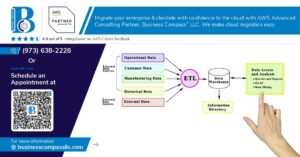Managing AWS multi-account architecture at scale requires more than just good intentions—it demands a systematic approach using Infrastructure as Code. Cloud architects and DevOps engineers face the challenge of provisioning and managing dozens or hundreds of AWS accounts while maintaining security, compliance, and operational efficiency.
This comprehensive guide walks you through IaC multi-account provisioning strategies that actually work in production environments. You’ll discover how to design scalable account structures using AWS Organizations management principles and implement robust cross-account security management that doesn’t slow down your development teams.
We’ll cover essential Infrastructure as Code AWS tools like Terraform and CloudFormation for multi-account setup, showing you how to build automated pipelines that provision accounts consistently. You’ll also learn proven AWS multi-account strategy patterns for network connectivity and resource sharing that scale from startup to enterprise.
Whether you’re architecting your first multi-account environment or optimizing an existing setup, this Cloud architect guide provides practical techniques for AWS account automation that reduce manual overhead and improve governance across your entire AWS footprint.
Understanding Multi-Account Architecture Benefits and Core Principles
Implementing security boundaries through account isolation
AWS multi-account architecture creates natural security boundaries that prevent accidental cross-environment access and limit blast radius during security incidents. Each AWS account acts as a hard boundary with its own set of IAM policies, VPCs, and resource isolation. Cloud architects leverage this approach to separate workloads by environment (dev, staging, production), business units, or security classifications. When combined with Infrastructure as Code AWS tools like Terraform or CloudFormation, account isolation ensures that development teams can’t accidentally affect production resources, while security policies remain consistent across all accounts through automated provisioning templates.
Achieving operational excellence with centralized governance
AWS Organizations management enables centralized control while maintaining account autonomy for individual teams. Master accounts can enforce service control policies (SCPs) that define guardrails across all member accounts, preventing unauthorized service usage or resource creation. This AWS multi-account strategy allows teams to innovate within defined boundaries while maintaining compliance standards. Centralized billing, logging, and monitoring provide visibility across the entire organization, while automated account provisioning through IaC ensures consistent security baselines and operational standards are applied to every new account without manual intervention.
Optimizing cost management across multiple environments
Multi-account structures provide granular cost visibility and enable sophisticated cost allocation strategies for enterprise environments. Each account maintains separate billing boundaries, making it easy to track costs by project, department, or environment type. AWS Cost Explorer and billing alerts can be configured per account, while consolidated billing through AWS Organizations provides volume discounts across all accounts. IaC multi-account provisioning can include automated cost controls like budget alerts, resource tagging strategies, and scheduled resource shutdown policies that prevent cost overruns while maintaining operational efficiency across development and production environments.
Establishing compliance frameworks for enterprise requirements
Cross-account security management enables organizations to meet strict regulatory requirements through consistent policy enforcement and audit trails. Each account can be configured to meet specific compliance standards (SOC 2, HIPAA, PCI DSS) while maintaining clear separation between compliant and non-compliant workloads. AWS multi-account architecture supports compliance through centralized logging to CloudTrail, automated security scanning, and policy-as-code implementations that ensure every account adheres to organizational standards. This approach simplifies audits by providing clear boundaries and consistent security controls across all environments through Infrastructure as Code deployment patterns.
Essential Infrastructure as Code Tools for AWS Multi-Account Management
Leveraging AWS Organizations for centralized account management
AWS Organizations serves as the foundation for multi-account architecture, providing centralized billing and management across your entire AWS infrastructure. This service enables cloud architects to create organizational units (OUs) that mirror business structures while applying Service Control Policies (SCPs) for governance. Organizations automates account creation through APIs, making it essential for IaC multi-account provisioning workflows. The consolidated billing feature reduces administrative overhead while detailed cost allocation reports provide granular visibility into resource consumption across accounts.
Utilizing Terraform for cross-account resource provisioning
Terraform excels at managing AWS multi-account architecture through its provider aliasing capabilities and state management features. Multiple AWS provider blocks allow simultaneous resource deployment across different accounts within a single configuration file. The aws_organizations_account resource enables programmatic account creation, while data sources facilitate cross-account resource referencing. Remote state backends ensure consistent infrastructure tracking across distributed teams. Terraform modules encapsulate reusable patterns for standardized account configurations, reducing deployment time and maintaining consistency across environments.
Implementing AWS Control Tower for automated governance
AWS Control Tower accelerates multi-account setup by automating the creation of well-architected landing zones with pre-configured guardrails and logging. This service integrates seamlessly with AWS Organizations, establishing account baselines that include AWS CloudTrail, AWS Config, and centralized logging to CloudWatch and S3. Account Factory automates provisioning workflows while detective and preventive guardrails enforce security standards across all accounts. Control Tower’s dashboard provides comprehensive visibility into compliance status, making it invaluable for enterprise-scale Infrastructure as Code AWS implementations.
Integrating CloudFormation StackSets for standardized deployments
CloudFormation StackSets enable consistent resource deployment across multiple AWS accounts and regions through a single operation. This service integrates with AWS Organizations to automatically deploy stacks to new accounts based on organizational unit membership. StackSets support both service-managed and self-managed permissions models, providing flexibility for different security requirements. Template parameterization allows account-specific customizations while maintaining standardized configurations. The rollback capabilities and deployment status tracking make StackSets particularly valuable for CloudFormation multi-account setup scenarios requiring high reliability and auditability.
Designing Scalable Account Structures and Hierarchies
Creating Effective Organizational Unit Strategies
Building a solid AWS multi-account architecture starts with smart organizational unit design that mirrors your business structure. Create OUs based on functional teams like development, production, and security rather than projects that come and go. Nest child OUs under parent units to inherit policies automatically – this saves tons of management overhead. Set up dedicated OUs for sandbox environments where developers can experiment freely without affecting production systems. Consider creating separate OUs for different geographical regions or compliance requirements. The key is keeping your OU structure simple enough that new team members can understand it quickly but flexible enough to grow with your organization.
Establishing Naming Conventions and Tagging Standards
Consistent naming conventions prevent chaos when you’re managing hundreds of AWS accounts across multiple teams. Use a standardized format like [environment]-[department]-[purpose]-[region] for account names and apply the same logic to all resources. Implement mandatory tags for cost center, owner, environment, and project to track spending and ownership clearly. Create terraform modules or CloudFormation templates that automatically apply your tagging standards to new accounts. Document your conventions in a shared wiki and enforce them through AWS Config rules. Remember that changing naming conventions later is painful, so get this right from day one.
Defining Account Types for Different Workload Categories
Different workloads need different account configurations, so create standardized account types that match your organization’s needs. Production accounts should have strict security controls and limited access, while development accounts need more flexibility for testing. Create dedicated accounts for shared services like DNS, monitoring, and logging to avoid circular dependencies. Set up specialized accounts for data lakes, machine learning workloads, and third-party integrations that have unique security requirements. Use AWS Organizations service control policies to enforce specific rules for each account type automatically. This approach makes onboarding new projects faster since teams can choose the appropriate account template rather than starting from scratch.
Implementing Cross-Account Security and Access Management
Configuring IAM Roles for Secure Cross-Account Access
Creating IAM roles for cross-account security management requires careful planning and precise execution. Start by establishing trust relationships between accounts using AssumeRole policies that specify exactly which AWS accounts can access specific resources. Design roles with granular permissions that align with your organizational structure – separate roles for developers, operations teams, and automated systems prevent privilege escalation and maintain security boundaries.
When implementing Infrastructure as Code AWS solutions, define role templates that can be consistently deployed across your multi-account architecture. Use CloudFormation or Terraform to create standardized role definitions with parameters for account-specific customizations. Include external ID requirements for third-party integrations and implement session duration limits to minimize exposure windows. Document role purposes clearly and maintain a centralized inventory of all cross-account roles for auditing purposes.
Establishing Centralized Identity Management with AWS SSO
AWS Single Sign-On transforms how organizations manage identity across their AWS multi-account architecture by providing unified access control from a central location. Configure permission sets that map to specific job functions and automatically propagate these permissions across multiple accounts. This approach eliminates the need to manage individual IAM users in each account while maintaining consistent access patterns.
Set up identity sources that integrate with your existing Active Directory or external identity providers to leverage existing user credentials and group memberships. Create permission sets for different roles – CloudArchitects, DevOps engineers, security teams – and assign them to appropriate AWS Organizations organizational units. Enable multi-factor authentication requirements and configure session durations based on risk levels. AWS SSO automatically provisions and deprovisions access as team members change roles or leave the organization.
Implementing Least Privilege Principles Across Accounts
Least privilege implementation in multi-account environments demands systematic policy design and continuous refinement. Start each role with minimal permissions and gradually add capabilities based on actual usage patterns rather than anticipated needs. Use AWS Access Analyzer to identify unused permissions and regularly audit role utilization to remove obsolete access rights.
Create service-specific roles that limit blast radius when compromised – separate roles for EC2 management, S3 access, and database operations prevent lateral movement between services. Implement time-bound access for administrative tasks using temporary credentials with automatic expiration. Monitor AWS CloudTrail logs to identify permission usage patterns and adjust policies accordingly. Consider using AWS IAM Policy Simulator to test permission changes before deployment across your IaC multi-account provisioning pipeline.
Setting Up Automated Security Monitoring and Compliance Checks
Automated security monitoring creates real-time visibility into your cross-account security management posture and catches policy violations before they become incidents. Deploy AWS Config rules consistently across all accounts to monitor configuration compliance and trigger automatic remediation for common misconfigurations. Set up CloudWatch Events to capture security-relevant API calls and route alerts to centralized security teams.
Implement AWS Security Hub to aggregate findings from multiple security services across your AWS multi-account strategy and create unified dashboards for security teams. Configure automated remediation workflows using Lambda functions that respond to specific security events – automatically rotate compromised credentials, disable non-compliant resources, or quarantine suspicious activities. Use AWS Systems Manager for patch management and compliance reporting across distributed infrastructure, ensuring consistent security baselines across all accounts in your organization.
Automating Account Provisioning Through IaC Pipelines
Building CI/CD pipelines for account creation workflows
Modern AWS account automation demands robust CI/CD pipelines that handle the entire lifecycle of account provisioning. Start by designing workflows that trigger on specific events like pull requests or scheduled intervals. Your pipeline should validate infrastructure code through automated testing, execute Terraform or CloudFormation templates, and perform post-deployment verification. Tools like GitHub Actions, GitLab CI, or AWS CodePipeline can orchestrate these complex workflows while maintaining audit trails and rollback capabilities for failed deployments.
Implementing version control strategies for infrastructure code
Effective version control forms the backbone of reliable IaC multi-account provisioning. Organize your repository structure with separate directories for shared modules, environment-specific configurations, and account templates. Branch protection rules prevent direct commits to main branches, while semantic versioning tags track infrastructure changes across environments. Consider implementing GitFlow or trunk-based development patterns that align with your team’s deployment cadence. Feature branches allow isolated testing of account configurations before merging to production branches.
Creating reusable modules for consistent deployments
Reusable modules eliminate code duplication and enforce standardization across your AWS multi-account architecture. Design modules that encapsulate common patterns like VPC creation, IAM role definitions, and security group configurations. Each module should accept parameters for customization while maintaining consistent outputs and naming conventions. Store these modules in separate repositories or subdirectories, versioning them independently to allow controlled updates. Documentation within modules explains required variables, outputs, and usage examples, enabling other teams to adopt your standardized infrastructure patterns quickly.
Managing Network Connectivity and Resource Sharing
Designing VPC architectures for multi-account environments
AWS multi-account architecture demands strategic VPC design that balances isolation with connectivity. Centralized networking accounts manage shared resources while keeping production workloads separate. Multi-region deployments require consistent IP addressing schemes across accounts, typically using non-overlapping CIDR blocks. Dedicated networking accounts host shared services like NAT gateways and internet gateways, reducing operational overhead. Hub-and-spoke topologies provide controlled access paths between accounts while maintaining security boundaries. Each account’s VPC serves specific purposes – development, staging, production, or shared services – enabling granular access control and resource management.
Implementing Transit Gateway for centralized network management
Transit Gateway acts as the central hub in multi-account networking, connecting VPCs across different accounts through a single managed service. Route tables control traffic flow between attached networks, allowing granular access policies. Cross-account attachments require proper IAM permissions and resource sharing through AWS Resource Access Manager. Propagated routes automatically advertise VPC subnets, while static routes provide precise traffic steering. Multiple route tables support network segmentation, keeping development traffic separate from production workloads. Direct Connect and VPN connections attach directly to Transit Gateway, providing hybrid connectivity to all connected accounts simultaneously.
Establishing secure connectivity patterns between accounts
Cross-account connectivity requires careful security planning using multiple AWS services. VPC Peering creates direct connections between specific VPCs, ideal for simple point-to-point communication. PrivateLink enables secure service access without internet exposure, particularly useful for shared services. Security groups and NACLs provide layered protection at different network levels. Cross-account IAM roles control which accounts can establish connections and access resources. DNS resolution across accounts needs proper forwarding rules to resolve private hostnames. Network monitoring through VPC Flow Logs captures traffic patterns for security analysis and troubleshooting connectivity issues.
Configuring DNS resolution across account boundaries
DNS resolution in multi-account environments requires Route 53 Resolver for forwarding queries between VPCs. Private hosted zones can be associated with VPCs across different accounts, enabling consistent internal naming. Resolver rules forward specific domain queries to designated DNS servers, supporting hybrid environments. Conditional forwarding handles on-premises domain resolution while maintaining cloud-native services. Shared resolver endpoints reduce complexity by centralizing DNS forwarding logic. Cross-account zone associations require proper IAM permissions and resource sharing policies. DNS logging captures query patterns for security monitoring and troubleshooting resolution failures across account boundaries.
Monitoring and Troubleshooting Multi-Account Infrastructure
Implementing centralized logging with CloudTrail and CloudWatch
Setting up centralized logging across your AWS multi-account architecture requires deploying CloudTrail organization trails and CloudWatch log groups through Infrastructure as Code. Create a dedicated security account to aggregate all audit logs, implement cross-account log forwarding using CloudWatch log destinations, and establish standardized log retention policies. Use Terraform or CloudFormation to deploy consistent logging configurations across all member accounts, ensuring API calls, resource changes, and security events flow into your centralized monitoring infrastructure.
Setting up cross-account monitoring and alerting systems
Cross-account monitoring becomes manageable when you establish a central operations account that receives metrics and alarms from all member accounts. Deploy CloudWatch cross-account sharing through resource policies, create standardized metric filters for critical events like root account usage or unauthorized access attempts, and implement SNS topics that route alerts to appropriate teams. Configure EventBridge rules to capture and forward security-related events across account boundaries, enabling real-time visibility into your entire multi-account infrastructure.
Establishing operational dashboards for account visibility
Operational dashboards provide the single pane of glass your cloud architect teams need for AWS multi-account management. Build comprehensive CloudWatch dashboards that display key metrics like account-level resource utilization, billing trends, security compliance status, and infrastructure health across all member accounts. Integrate AWS Organizations data to show account hierarchy, implement automated dashboard provisioning through IaC pipelines, and create role-based access controls so different teams see relevant metrics without exposing sensitive information from other business units.
Managing AWS multi-account environments through Infrastructure as Code isn’t just a best practice—it’s become essential for any organization serious about cloud scalability and security. The combination of proper account hierarchies, automated provisioning pipelines, and robust cross-account security creates a foundation that grows with your business while keeping complexity under control. When you pair the right IaC tools with solid architectural principles, you’re setting up your team for success rather than wrestling with manual configurations down the road.
The real magic happens when everything clicks together: your accounts provision automatically, security boundaries work seamlessly, and your monitoring gives you clear visibility across the entire infrastructure. Start small with a basic multi-account setup, get comfortable with the IaC workflows, and gradually expand your architecture as you learn what works best for your organization. Remember, the goal isn’t perfection from day one—it’s building something reliable that your team can confidently manage and scale.




















